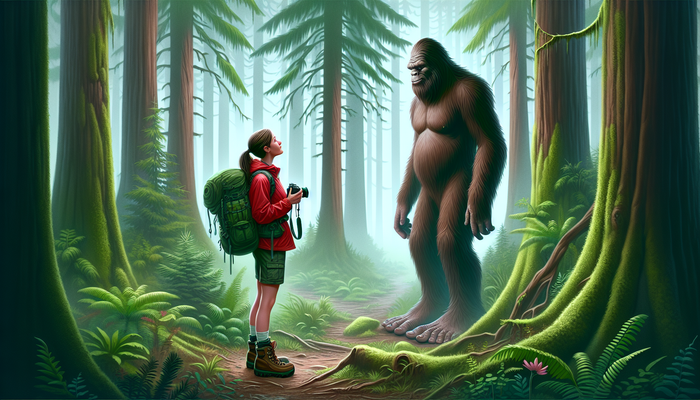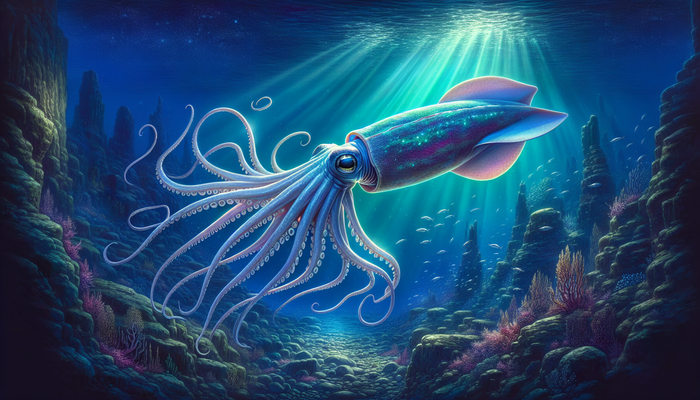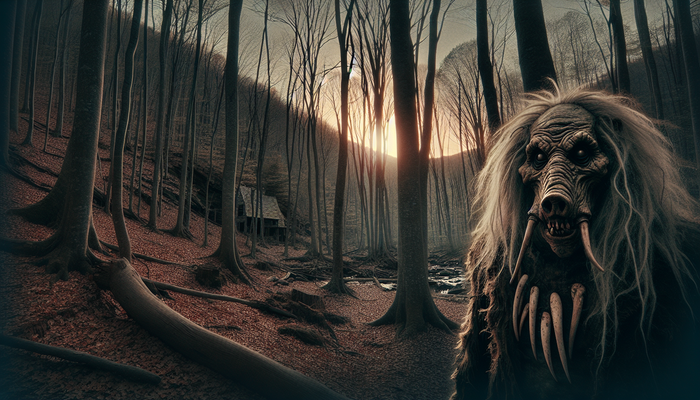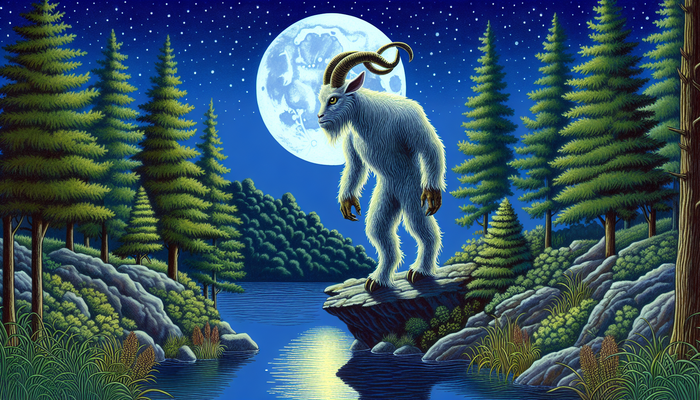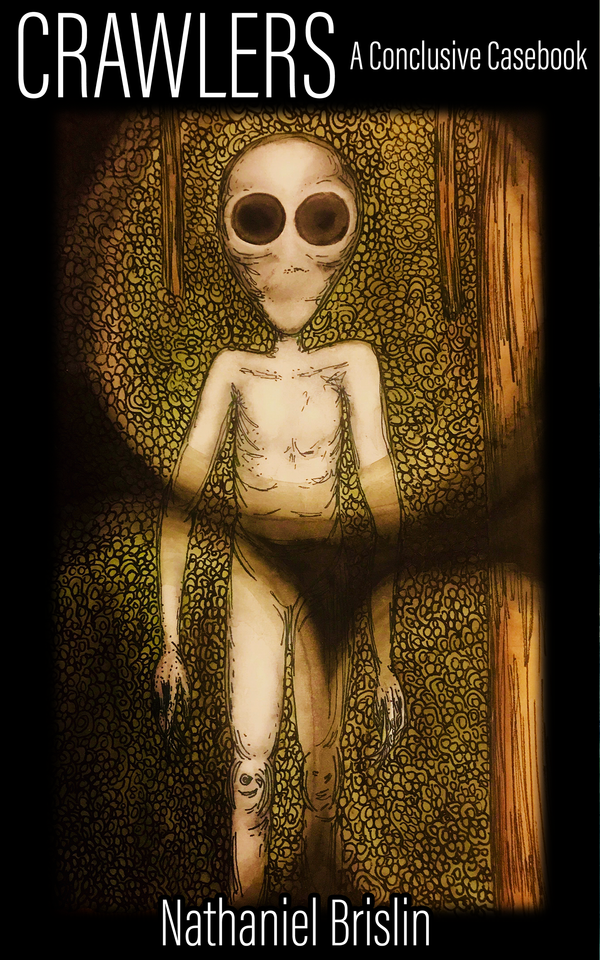Exploring Cryptid Taxonomy: Classifying the Unclassified Creatures
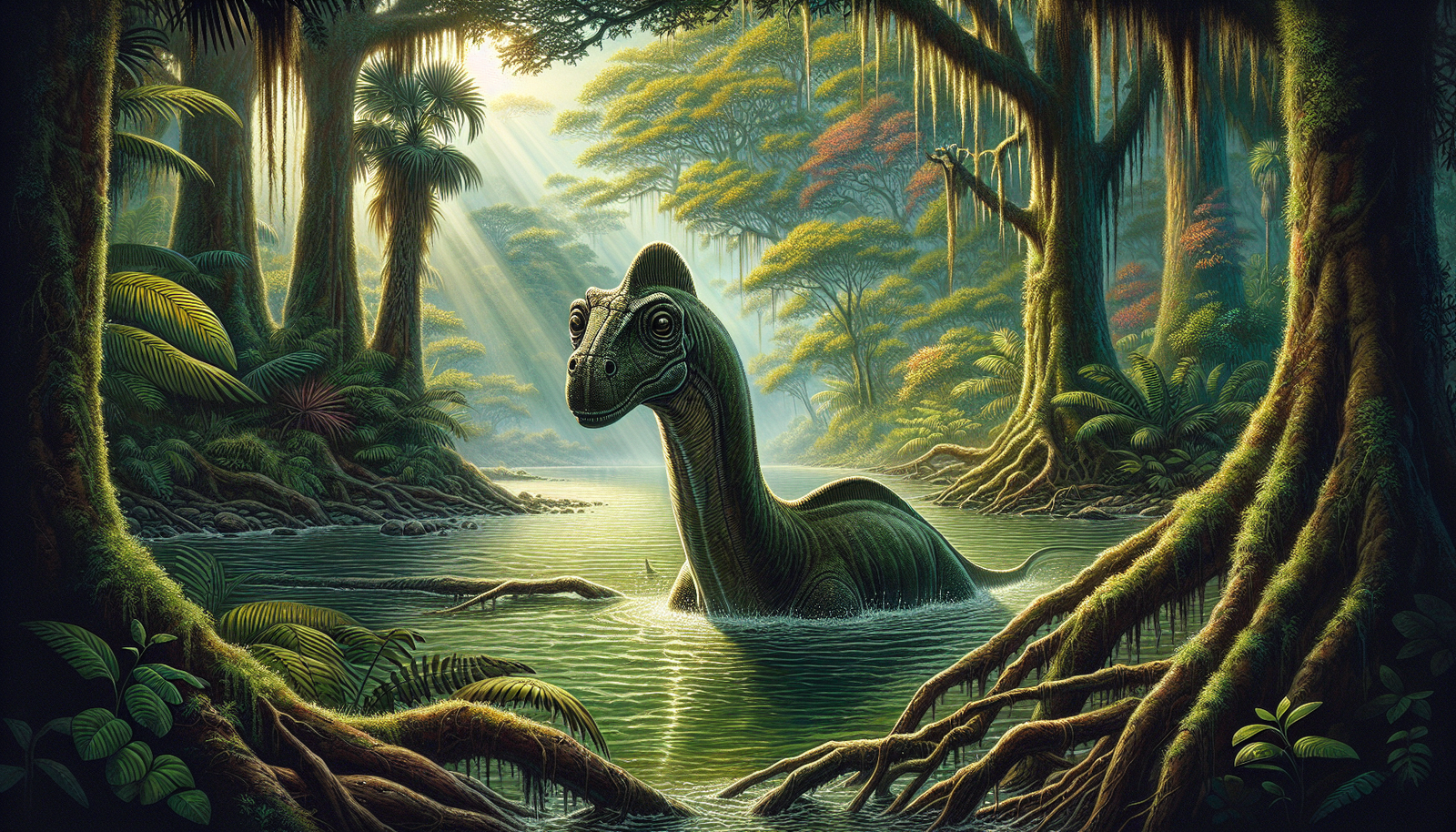
By James Roberts, Cryptozoologist
What exactly are cryptids, and how do we go about classifying these unclassified creatures?
Cryptids are animals whose existence is suggested but not scientifically proven. The term, coined in the 1980s by zoologist John Wall, encompasses a wide range of beings, from the legendary Loch Ness Monster to the enigmatic Chupacabra. These creatures occupy a unique space at the intersection of science, mythology, and cultural storytelling, challenging our understanding of the natural world and pushing the boundaries of zoological classification.
The allure of cryptids lies in their ability to ignite our sense of wonder and curiosity. They represent the unknown, the possibility that there are still mysteries to be uncovered in our world. As we explore the taxonomy of cryptids, we embark on a journey that not only examines these fascinating creatures but also sheds light on the human desire to categorize and understand the world around us.
Understanding Cryptids: A Journey Through Time and Imagination
The concept of cryptids is not a modern invention. Throughout history, humans have told tales of strange and wondrous creatures that defy easy explanation. Ancient myths and legends are replete with descriptions of beasts that blur the line between reality and fantasy. The griffin of Greek mythology, with the body of a lion and the head and wings of an eagle, is an early example of a creature that combines familiar elements in unfamiliar ways – a hallmark of many modern cryptids.
As human knowledge expanded and scientific understanding of the natural world grew, the nature of cryptids evolved. No longer were they purely mythical beings, but rather creatures that might exist in unexplored corners of the world. The age of exploration brought tales of sea serpents and giant squid, creatures that seemed too fantastic to be real but were later proven to exist in some form.
Today, cryptids occupy a unique space in our collective imagination. They are not simply mythical creatures, nor are they accepted as real animals. Instead, they exist in a liminal space, supported by anecdotal evidence and eyewitness accounts but lacking the scientific proof necessary for official recognition.
The nature of cryptids is as varied as the creatures themselves. They can be broadly categorized into several types:
- Living Fossils: These are creatures believed to have existed in prehistoric times but thought to be extinct. The most famous example is perhaps the coelacanth, a fish believed to have gone extinct 66 million years ago until it was rediscovered in 1938. While the coelacanth is no longer a cryptid, it serves as a tantalizing reminder that creatures thought long gone might still exist. The Mokele-mbembe, a dinosaur-like creature said to inhabit the Congo Basin, falls into this category of cryptids.
- Misidentified Animals: Many cryptids may simply be known animals that have been misidentified or exaggerated. The Chupacabra, often described as a blood-sucking creature, may in fact be sightings of coyotes or dogs suffering from mange, their appearance altered by disease.
- Cultural Constructs: Some cryptids are deeply rooted in local folklore and may serve as cultural symbols or cautionary tales. The Jersey Devil, a creature said to inhabit the Pine Barrens of New Jersey, has become an integral part of the region's folklore and identity.
- Survivors of Extinct Species: Similar to living fossils, these are animals believed to have gone extinct in recent history but may still exist in small, isolated populations. The Thylacine, or Tasmanian Tiger, officially declared extinct in 1936, continues to be the subject of reported sightings.
- Supernatural Entities: Some cryptids blur the line between the natural and supernatural worlds. Creatures like the Wendigo of Algonquin folklore or the Skinwalkers of Navajo tradition are deeply embedded in cultural and spiritual beliefs.
The Taxonomy of Cryptids: Classifying the Unclassified
The challenge of classifying cryptids lies in their very nature – they are, by definition, unclassified. Traditional taxonomic systems, designed to categorize known species based on observable characteristics and genetic relationships, struggle to accommodate creatures whose very existence is in question. However, this hasn't stopped researchers and enthusiasts from attempting to create systems of classification for these elusive beings.
The history of cryptid classification is as old as the field of cryptozoology itself. Early naturalists and explorers often included descriptions of strange and unknown creatures in their accounts of newly discovered lands. These early attempts at classification were often a mix of accurate observation and fantastical speculation, reflecting the limited knowledge of the time.
One of the earliest known attempts at systematically cataloging unusual creatures was the "Physiologus," a text from ancient Greece that included descriptions of both real and mythical animals. This work laid the groundwork for medieval bestiaries, which continued the tradition of blending factual and fictional creatures in a single compendium.
As scientific understanding advanced, particularly with the development of Linnaean taxonomy in the 18th century, the approach to classifying unknown creatures became more rigorous. However, the lack of physical evidence for many cryptids meant that they remained outside the realm of official scientific classification.
In recent years, several modern classification systems have been proposed to bring order to the world of cryptids:
- The Champagne System: Developed by Bruce A. Champagne, this system focuses specifically on sea serpents, categorizing them into nine distinct types based on reported physical characteristics. This approach demonstrates the potential for creating structured classification systems even for creatures whose existence is unproven.
- The Aequivotaxa System: This proposed system aims to provide a more rigorous framework for cryptid classification, focusing on their potential ecological roles and evolutionary relationships. It attempts to bridge the gap between folklore and scientific inquiry, offering a way to think about cryptids in terms of their possible place in the natural world.
- Ethnozoological Approaches: These methods emphasize the importance of local knowledge and cultural context in understanding and classifying cryptids. By studying how different cultures represent and categorize unknown animals, researchers can gain insights into the nature of cryptids and their significance in various societies.
Despite these efforts, classifying cryptids remains a challenging endeavor. The lack of physical evidence, the variability of eyewitness accounts, and the influence of cultural narratives all complicate the process. Many cryptids exist in regions that are difficult to access, making scientific study challenging. Additionally, the very act of classification can be seen as an attempt to impose order on the inherently mysterious, potentially stripping cryptids of the very quality that makes them so intriguing.
The Role of Technology in Cryptid Research
As our technological capabilities have advanced, so too have the methods used to study and classify cryptids. DNA analysis, in particular, has opened up new avenues for cryptozoological research. In 2014, a study of alleged Yeti samples revealed that they were, in fact, from known bear species. While this result might seem disappointing to cryptid enthusiasts, it demonstrates the potential for scientific inquiry to shed light on cryptid reports.
Citizen science has also played an increasingly important role in cryptozoology. Online platforms allow enthusiasts and amateur researchers to share sightings, photographs, and other evidence, creating a collaborative effort to explore the unknown. This democratization of research has led to a wealth of data, though it also presents challenges in terms of verification and analysis.
Advanced imaging technologies, including thermal cameras and drones, have allowed researchers to explore habitats that were previously inaccessible. These tools have the potential to capture evidence of cryptids in their natural environments, though conclusive proof remains elusive.
The Cultural Significance of Cryptids
Beyond their zoological interest, cryptids hold a special place in human culture. They often reflect societal fears, desires, and our complex relationship with the natural world. The Chupacabra, for instance, emerged in Puerto Rico in the 1990s and quickly spread throughout Latin America and beyond. Some researchers have suggested that the creature symbolizes anxieties about environmental degradation and economic instability.
Bigfoot, perhaps the most famous North American cryptid, embodies the tension between civilization and wilderness. As urban areas expand and wild spaces shrink, Bigfoot represents a connection to the untamed natural world that many feel is slipping away.
Media representations have played a significant role in shaping public perception of cryptids. Documentaries, television shows, and films often dramatize cryptid encounters, blurring the line between fact and fiction. This media influence can lead to a cycle of belief and skepticism, as sensationalized portrayals may overshadow scientific inquiry.
The Future of Cryptid Taxonomy
As our understanding of the natural world continues to evolve, so too will our approach to cryptid taxonomy. The integration of scientific methods with cultural narratives may provide a more comprehensive understanding of these elusive creatures.
Interdisciplinary collaboration will likely play a crucial role in future cryptid research. By combining insights from biology, anthropology, folklore studies, and technology, researchers can develop a more nuanced understanding of cryptids and their place in our world.
The ongoing quest for discovery drives cryptid research forward. Each expedition, each sighting, and each piece of evidence contributes to our understanding of the natural world and the stories we tell about it. While many cryptids may never be proven to exist, the search itself yields valuable insights into biodiversity, cultural beliefs, and the human psyche.
Case Studies: Notable Cryptids and Their Impact
To better understand the world of cryptids and the challenges of their classification, let's examine a few notable examples:
Bigfoot: The Iconic North American Cryptid
Bigfoot, also known as Sasquatch, is perhaps the most well-known cryptid in North America. Described as a large, ape-like creature standing between 6 to 9 feet tall, Bigfoot is said to inhabit the forests of the Pacific Northwest, though sightings have been reported across the continent.
The legend of Bigfoot has deep roots in Native American folklore, with many tribes having stories of wild men or hairy giants. Modern Bigfoot lore began in earnest in the mid-20th century, with a series of highly publicized sightings and the famous Patterson-Gimlin film of 1967, which purportedly shows a female Bigfoot walking along a riverbank.
Despite numerous expeditions, alleged footprint casts, and countless eyewitness accounts, conclusive proof of Bigfoot's existence remains elusive. Skeptics argue that many sightings can be attributed to misidentified bears or humans in costumes, while believers point to the consistency of descriptions across time and geography as evidence of the creature's reality.
The cultural impact of Bigfoot extends far beyond cryptozoology. The creature has become a staple of popular culture, featured in countless movies, TV shows, and advertisements. It has also become a significant draw for tourism in areas where sightings are common, demonstrating the economic impact that cryptids can have on local communities.
From a taxonomic perspective, Bigfoot presents a unique challenge. If it exists, where would it fit in the primate family tree? Some researchers have suggested it could be a surviving population of Gigantopithecus, an extinct genus of ape that lived in Asia. Others propose it might be an unknown species of great ape or even a primitive human relative.
The Loch Ness Monster: Scotland's Legendary Lake Dweller
The Loch Ness Monster, affectionately known as "Nessie," is one of the world's most famous cryptids. Said to inhabit the depths of Loch Ness in the Scottish Highlands, this creature is typically described as having a long neck and a large body, reminiscent of a plesiosaur or other prehistoric marine reptile.
The history of the Loch Ness Monster stretches back to the 6th century, with a account of Saint Columba encountering a beast in the River Ness. However, the modern legend of Nessie began in 1933 with a sighting reported in the Inverness Courier. This was followed by the famous "Surgeon's Photograph" in 1934, which appeared to show the head and neck of a plesiosaur-like creature emerging from the water. Although this photo was later revealed to be a hoax, it cemented the image of Nessie in the public imagination.
Numerous scientific investigations have been conducted at Loch Ness, using everything from sonar to underwater cameras to DNA analysis of the loch's waters. While these studies have failed to provide conclusive evidence of a large unknown animal in the loch, they have contributed to our understanding of the lake's ecosystem and the potential for misidentification of known species.
The Loch Ness Monster illustrates the complex interplay between cryptozoology, tourism, and cultural identity. The creature has become a symbol of Scotland, drawing visitors from around the world and generating significant revenue for the local economy. This economic impact raises interesting questions about the incentives for maintaining belief in cryptids, even in the face of scientific skepticism.
From a classification standpoint, if the Loch Ness Monster exists, it would likely represent either a surviving population of an extinct species (like a plesiosaur) or an unknown species of giant fish or amphibian. The challenge lies in reconciling the reported sightings with what we know about the loch's ecosystem and the biological requirements of a large aquatic predator.
Lesser-Known Cryptids: Mokele-mbembe, Ahool, and Dobhar-chú
While Bigfoot and the Loch Ness Monster dominate cryptid discourse, there are numerous lesser-known creatures that offer fascinating insights into cryptozoology and taxonomy:
Mokele-mbembe
This cryptid is said to inhabit the Congo Basin in Central Africa. Described as a large, sauropod-like creature, Mokele-mbembe is often portrayed as a living dinosaur. Local legends speak of a creature that can uproot trees and is greatly feared by the indigenous people. The idea of a surviving population of dinosaurs captures the imagination and challenges our understanding of extinction and survival.
From a taxonomic perspective, if Mokele-mbembe exists, it would represent an extraordinary case of survival against the odds. How could a population of large dinosaurs have survived for millions of years undetected? What adaptations would have been necessary? These questions highlight the challenges of integrating cryptids into our understanding of evolutionary history.
Ahool
This cryptid is reported to inhabit the jungles of Java in Indonesia. Described as a giant bat with a wingspan of up to 12 feet, the Ahool is said to emit a distinctive cry that gives it its name. Some cryptozoologists have speculated that it could be an unknown species of giant bat or even a surviving pterosaur.
The Ahool presents an interesting case for cryptid classification. If it exists, it would likely represent either an unknown species of bat (which would be the largest in the world by a significant margin) or a case of misidentification of known flying creatures. The challenge lies in reconciling the reported size with what we know about the physiological limits of flight in bats.
Dobhar-chú
This creature from Irish folklore is described as an aquatic cryptid, often portrayed as a large, carnivorous otter-like animal. The name translates to "water hound" in Irish. Legends of the Dobhar-chú date back centuries, with some accounts describing it as a vicious predator capable of killing humans.
The Dobhar-chú illustrates the close relationship between cryptids and folklore. From a taxonomic perspective, if such a creature exists, it would likely represent either an unknown species of large mustelid (the family that includes otters and weasels) or a case of misidentification and exaggeration of known aquatic predators. The challenge lies in separating the core of potential truth from the embellishments of folklore.
These lesser-known cryptids demonstrate the global nature of cryptozoology and the diverse forms that unknown animals can take in human imagination and local lore. They also highlight the challenges of cryptid taxonomy, as each creature presents unique questions about biology, ecology, and the limits of scientific knowledge.
Conclusion
The study of cryptids, whether they ultimately prove to be real or not, offers valuable insights into human psychology, cultural beliefs, and our relationship with the natural world. It challenges us to question what we know and to remain open to the possibility of discovery. As we continue to explore the uncharted corners of our planet and push the boundaries of scientific understanding, the field of cryptid taxonomy serves as a reminder that there may still be wonders waiting to be uncovered in the shadows of our world.
The classification of cryptids is more than just an academic exercise. It's a testament to human curiosity and our enduring fascination with the unknown. Whether these creatures exist in physical reality or solely in the realm of human imagination, they play a vital role in shaping our understanding of the world around us. They inspire us to look beyond the known, to question our assumptions, and to keep exploring.
As we move forward, the field of cryptid taxonomy will likely continue to evolve, incorporating new technologies, methodologies, and perspectives. It may never fit neatly into traditional scientific frameworks, but perhaps that's part of its value. In straddling the line between science and folklore, between the known and the unknown, cryptid taxonomy reminds us of the complex, multifaceted nature of human knowledge and experience.
In the end, the study of cryptids is as much about understanding ourselves as it is about classifying unknown creatures. It reflects our fears, our hopes, our sense of wonder, and our deep-seated need to make sense of the world around us. As we continue to explore the shadowy realm of cryptids, we not only push the boundaries of zoological classification but also delve deeper into the human psyche and our place in the natural world.
From Bigfoot to UFOs: Hangar 1 Publishing Has You Covered!
Explore Untold Stories: Venture into the world of UFOs, cryptids, Bigfoot, and beyond. Every story is a journey into the extraordinary.
Immersive Book Technology: Experience real videos, sights, and sounds within our books. Its not just reading; its an adventure.


